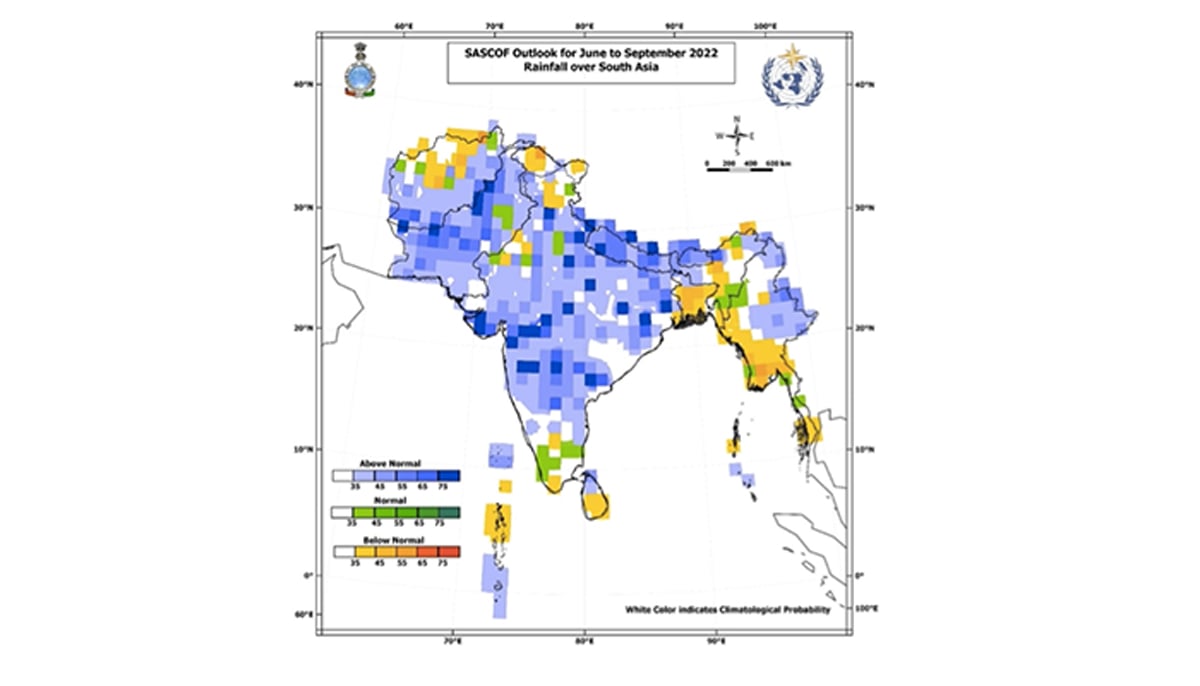Heatwaves, rains, floods: Climate change is here and Pakistan needs to act now
Climate-induced migration is a harsh reality that Pakistan faces. Not everyone will be able to go back to their original place of residence after the waters recede, in fact, that place may not exist...

Social media is awash with horrifying images of the havoc monsoon rains that have wreaked on a wide swathe of Pakistan.
People living in low-lying areas, in the path of hill torrents, or on poorly made embankments are awash in the misery of floods brought in the wake of the monsoon spell.
However, if we remove the date from the posts, and newspaper and television reports, the realisation would dawn that we have seen such images many times in the past.
Repeatedly, there have been glacial lake outburst floods in Khyber Pakhtunkhwa and Gilgit-Baltistan, which rarely make it into the headlines.
Hill torrents raging down their beds, streams and rivers bursting their banks and sweeping away whatever comes in their way in Balochistan, leading to massive damage and loss of lives and livestock are a familiar feature whenever there are torrential rains. These have been alternating with the other extreme of drought, to which this region is also prone.
Sindh suffers from too little, and then too much water. This year, like a previous couple of years, the monsoon has been punishing and relentless.
Its towns and cities are inundated and there seems to be no end to the misery of the people because the water levels are not subsiding. The provincial capital, Karachi, has taken a battering due to unprecedented rains that have broken all previous records.
While parts of Punjab suffered from what is still being called a ‘pre-monsoon’ spell, with heavy rain and hail storms in March which flattened standing crops. And all of the above came on the heels of a severe heat spell that impacted all parts of the country, even the northern glacial valleys, which experienced temperatures in excess of 30 degrees centigrade.
What is causing the extreme weather events in Pakistan?
Well, this is what climate scientists and meteorological experts have been warning about for years now.
The unpredictability, frequency, and ferocity of weather events are one of the manifestations of climate change. Rising sea surface temperatures mean more moisture uptake by the weather systems, which then drop them over the land in unprecedented volumes. Our systems are just not geared to cope with even half that volume.
Hence, we see the flooded streets and overflowing drains in the cities.
Nature manifests its wrath at the obstructions put in its way by humans by reclaiming the river and stream beds, and slopes stripped barren off the soil binding tree cover by bringing down boulders and debris in the hill tracts and alongside the river banks.
Former director general of Pakistan’s Meteorological Department, Dr Qamaruzzaman Chaudhury, has said that the erratic nature of the precipitation and extreme events are a clear indication of the impacts of climate change.
This is why Pakistan must focus on ‘Climate Proofing’ its infrastructure and systems against the shocks of nature. That is the only way to cope since there is little way of mitigation that we can do.
Could the damage have been minimized?
Yes. As Arif Goheer, a scientist at the Islamabad-based Global Change Impacts Studies Center points out that the warning had been sounded way back in April by the South Asian Climate Outlook Forum.
The outlook was developed by climate experts from eight South Asian countries, as well as international experts doing climate modelling.

The map clearly shows the extent and the intensity predicted. The period being cited is June to September, which means more is yet to come.
Usually, in Pakistan, the monsoon commences in August. This year June and July have been debilitating. On the basis of this information, Pakistan’s own Meteorological Department put out the Monsoon Outlook on June 7.
But were the municipal services ready? No.
Were the disaster ‘management’ bodies ready? No.
Were the communication departments of the provinces, responsible for roads and bridges, ready? No.
We are seeing the same reactive response that we have seen in the wake of natural disasters before, therefore rescue and relief. While rehabilitation is still a long way off.
Why were the vulnerable areas not mapped? Why were rescue parties not posted before bridges collapsed and roads were washed away?
Thankfully Pakistan has community organizations and philanthropic organisations, which have morphed into disaster management organisations that always swing into action when disaster strikes.
These organisations rely on the large-heartedness of fellow Pakistanis. But instead of them acting as supplementing the efforts of the government agencies, they assume the role of the primary relief providers.
Climate change is not something in the future. It is here and now.
Knee jerk actions like rescue and relief, which are the need of the hour, will not suffice.
Climate-induced migration is a harsh reality that Pakistan faces. Not everyone will be able to go back to their original place of residence after the waters recede, in fact, that place may not exist anymore. Or may have been stripped of all the resources that allowed them to make a living there.
An infrastructure audit needs to be done.
We are a data deficient country. But if there is one thing that climate change needs to change is the ad hoc approach to dealing with disasters like the present rains.
We need to map out vulnerable ecosystems, people and biodiversity in those regions and see how to shore up the coping mechanisms.
The science-academia-government departments' nexus needs to be built and strengthened if we are to get out of the reactive mode.
Afia Salam is a freelance journalist who writes on the environment, climate change, gender and other social issues.




